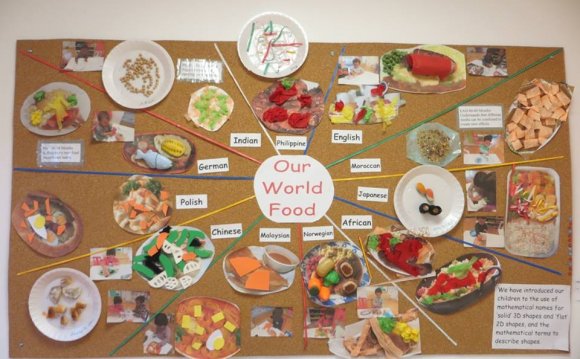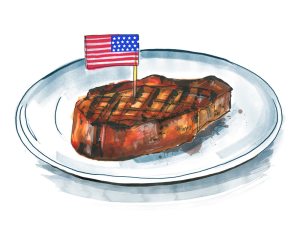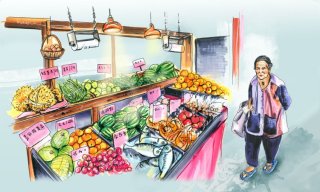

Food nourishes the soul. Into the level that people all eat food, and then we all have actually souls, meals is the solitary great unifier across countries. But what nourishes your soul?
For me personally, a first-generation Korean-American, convenience food is a full bowl of kimchi, white rice, and fried Spam. These types of choices are individually significant — and culturally meaningful. Our comfort food types chart that, in which we result from, and what took place to united states along the way. Notes Jennifer 8. Lee (TED Talk: Jennifer 8. Lee actively seeks General Tso), “what you wish to prepare and consume is a build up, a function of one's experiences — the folks you’ve dated, everything you’ve learned, for which you’ve gone. There might be inbound elements from other countries, but you’ll constantly consume things that indicate something for your requirements.”
In most of China, just the older years still go shopping everyday into the damp market, then go homeward and cook standard meals.
Jennifer Berg, director of graduate food studies at nyc University, records that meals is specially important when you become part of a diaspora, separated from your own mama tradition. “It’s the very last vestige of culture that individuals shed, ” says Berg. “There’s some aspects of maternal culture that you’ll lose straight away. Initially is the method that you dress, because if you would like merge or perhaps part of a larger mainstream culture what would be the most noticeable are the ones which you release. With meals, it’s something you are doing ideally 3 x everyday, therefore there are many more possibilities to connect to memory and family and place. It’s the toughest to stop.”
Meals as identification
The “melting pot” in American cuisine is a myth, perhaps not awfully unlike the idea of a melting cooking pot of American culture, notes chef Dan Barber (TED Talk: How I fell deeply in love with a fish). “Most countries don’t think about their cuisine in such monolithic terms, ” he claims. “French, Mexican, Chinese, and Italian cuisines each include dozens of distinct local meals. And I also believe “American” food is relocating the same course, getting more localized, perhaps not globalized.”
 Most countries don’t consider their food in monolithic terms. Mexican, Chinese and French cuisines each comprise lots of distinct regional meals.
Most countries don’t consider their food in monolithic terms. Mexican, Chinese and French cuisines each comprise lots of distinct regional meals.
Us food is shaped because of the normal wealth of the country. Having never faced agricultural difficulty, People in america had the blissful luxury of perhaps not counting on turning plants, including the Japanese, whoever food culture today showcases buckwheat alongside rice, or even the Indians, or perhaps the French and Italians, who feature lentils and beans alongside grain. “That sorts of negotiation utilizing the land required individuals include those crops in to the tradition, ” claims Barber. Therefore eating soba noodles becomes element of exactly what it means become Japanese, and consuming beans becomes section of what it means to-be French.
Therefore if everything we consume is what our company is, what exactly are Americans? Well, animal meat. “If People in america have any unifying food identity, i might state we're a (mainly white) beef culture, ” states Barber. “The protein-centric supper dish, whether you’re discussing a boneless chicken breast, or a 16-ounce steak, as a regular hope is one thing that The united states actually produced, now exports into the remaining world.”
Every single tradition and faith utilizes food within their celebrations, claims Ellen Gustafson, co-founder associated with FEED Project plus the 30 task, which aims to handle both hunger and obesity problems globally. (view the woman TED Talk: Obesity + hunger = 1 global food problem.) “The celebratory nature of meals is universal. Every period, every collect, and every getaway possesses its own food, which does work in America as well. It Will Help establish united states.”
Food as survival
Occasionally food indicates survival. Whilst the Chinese chefs just who exported “Chinese” food around the globe ate authentic cooking yourself, the laundry they served, hence creating new cuisines completely, were predicated on financial need. Chinese food in America, as an example, is Darwinian, states Lee. It was a means for Chinese cooks to endure in America and earn a living. It began because of the innovation of chop suey in the belated 1800s, followed by lot of money cookies across the period of World War II, and also the pervading General Tso’s Chicken, inside 1970s. Waves of more genuine Chinese food then followed, as Hunan and Sichuan cooking came to the U.S. through Taiwan.
In Chinese metropolitan areas, at the same time, only grandparents are cooking and consuming the way in which people from beyond China might imagine “Chinese” meals. The older generation still would go shopping every single day inside wet marketplace, discount for tomatoes, then go homeward that night and prepare conventional dishes, says Crystyl Mo, a food blogger based in Shanghai. But most people born after the Cultural Revolution don’t understand how to prepare. “That generation ended up being concentrated purely on studying, and their parents never taught all of them simple tips to prepare, ” claims Mo. “So they’re very educated, but they’re eating takeout or returning to their particular moms and dads’ domiciles for dishes.”
YOU MIGHT ALSO LIKE
![[Core Kyoto] Shinise Food Culture](/img/video/core_kyoto_shinise_food_culture_33.jpg)











